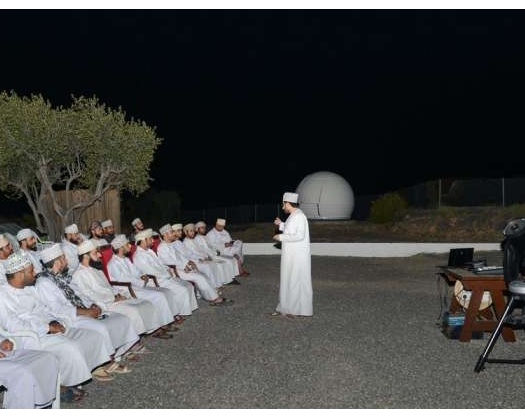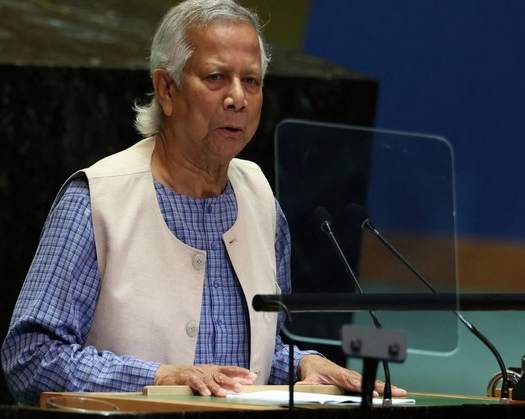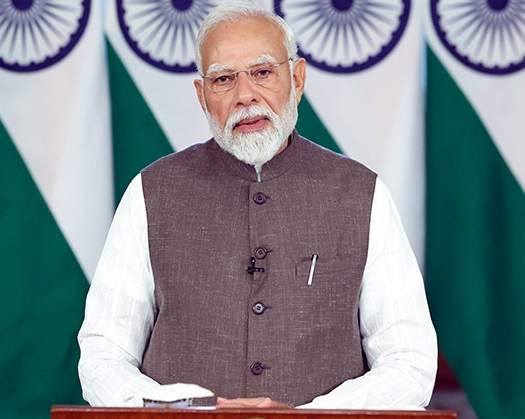Muscat — There are several astronomical observatories in the Sultanate of Oman that are committed to the study of celestial events and the advancement of astronomical understanding. The clock Observatory in Muscat Governorate, which is used to study the movement of planets and stars and serve as an educational hub for students and astronomy aficionados, is one of them.
Considering the significance of this industry, Oman The Astronomical Society is instrumental in raising public understanding of astronomy. These include education and outreach, with the Society promoting scientific study, hosting events like astronomical observation nights, and providing frequent lectures and workshops on a variety of astronomical subjects.
The Society fosters astronomical scientific studies and aids in making essential resources available to researchers and anybody who is interested. Its duties include publishing astronomical content that acts as instructional materials for enthusiasts, partnering with educational institutions, supporting schools and universities in improving astronomy-related curricula, and taking part in international events like World Space Week.
For a very long time, Omanis have paid close attention to astronomy, which has been crucial in their daily lives. They planned their affairs through it, including agriculture, fishing, and travel. They created the solar sundial system, which is known locally as AlLamd, in order to divide falaj water during the day. The movement of the shadow of a gnomon (constructed of iron, wood, or stone) from sunrise to sunset is the foundation of this system, which acts as a clock for farmers' share of falaj water throughout the day. This was known as the day lecture to differentiate it from the night lecture, which always involved using stars to finish the water distribution process at night.
With the exception of rare circumstances where the number rises, these stars are well-known among farmers, with 24 in some wilayats and 26 in others. AlSarrah AlOula, AlSarrah AlThaniya, AlKawi, Aldebaran, AlMiyathib, AlDhulmi, and other examples of these stars may be found. Farmers chose the star AlMunsif, which signifies the halfway point of the athar, the unit used to divide falaj water, which is equivalent to around half an hour, in order to guarantee accuracy in water distribution.
In mountainous areas like Al Jabal Al Akhdar, the terraced farming system maximizes the use of solar radiation angles, which leads to a range of crops based on planned measurements.
Omanis were well-known in the marine industry for being captains of ships. Ahmed bin Majid Al Saadi and Nasser bin Ali Al Khadhouri are just two examples of the thousands of sailors and navigators who carefully recorded their understanding of routes, stars, and seasons for travel and fishing. They relied on the stars for timing the fishing and trip seasons and as guides in the darkness of the ocean. They also comprehended sea strikes, which is a term used in Gulf and Omani popular culture to refer to violent or unexpected marine events, such as severe waves, strong currents, or sea storms, that disrupt the waters of the sea. The rising or setting of certain stars marked these periods for sailors, and they would not go to sea for fishing or transportation.
One of the most significant strikes known to ancient Omanis is Dharbat AlAhaimar, a star with a reddish tint. This results in debate over the star's precise identity. Some believe it to be Antares in the constellation Scorpius, while others think it to be Arcturus in the constellation Boötes, both of which rise at the same time. Dharbat AlShali is the 90th strike of the third hundred in the Hisbat AlDurour (calculation of periods) and is thought to be the most powerful and severe of all known strikes, lasting four to five days. Other notable strikes include Dharbat AlShali. Additionally, the strikes of Hawitaim, AlLakidhib, and AlKawi are also hazardous to sailors, which is why Omanis timed their seasons and knew their dates by the rising of stars.
According to Dr. Ishaq Yahya Al Shuaili, Chairman of the Oman Astronomical and Space Society, Omani proverbs have kept heritage alive in a straightforward manner that is both humorous and educational. For example, the arrival of the star Suhail marks the start of the heat's fall, as evidenced by the saying, "If Suhail appears, water and night cool down," and "When AlKawi appears, cut and roast the wheat," which alludes to the maturity of wheat and the time for its harvest. Wrapped in years of experience and ancestral knowledge, these and other sayings pass down astronomical heritage to future generations.
In accordance with the aims of the National Space Policy, Al Shuaili thinks that a concerted effort among various educational institutions, civil society, and science and technology-related organizations to increase the scope of scientific activities and contributions to promote progress in the astronomy and space sectors will raise astronomical and space awareness among the new generation in the Sultanate of Oman.
This, he said, may be accomplished by incorporating and expanding astronomy and space sciences into curricula to teach pupils the fundamentals of astronomy and its applications, as well as to establish an early connection between them and space research. Bringing up subjects like satellites, meteorites, space robots, and human exploration missions will pique the scientific curiosity of pupils at different educational stages.
He stated that practical and community activities are crucial for demonstrating and elucidating theoretical ideas. These include astronomical summer camps, astronomical scientific competitions, visits to astronomical observatories, scientific astronomical observation workshops, and other events that give participants a comprehensive understanding of astronomy.
Additionally, he stressed the importance of using scientific media to promote the role of astronomy and space in our daily lives by creating educational documentaries and digital content that explain the impact and function of space applications in diverse areas of life and help advance key industries like agriculture, communications, navigation, and disaster management.
Additionally, collaborations with specialized scientific organizations and astronomy and space institutions help improve community education. These partnerships include scientific research facilities and the Oman Astronomical and Space Society, with whom we work to provide a range of scientific activities for the public, like observation nights and astronomical festivals, in universities and schools, he continued.
In the same vein, Omar Hamdan Al Hosni, a board member of the Oman Astronomical and Space Society, emphasized that training and qualifying teachers in astronomy and space is a strategic investment in raising space awareness throughout society since teachers play a key role in conveying a passion for science. Giving them modern educational resources and training them in astronomy and space would help raise community awareness.
According to Al Hosni, astronomy and space sciences are undergoing a major worldwide revolution, with more and more nations joining this industry and benefiting from technological advancements, particularly in the areas of small satellites (CubeSats) and commercial space endeavors. The Sultanate of Oman may adapt to these changes by implementing the National Space Policy, which the Ministry of Transport, Communications, and Information Technology has implemented through the National Space Program. The National Space Policy has been adopted, he noted, with an emphasis on fostering scientific study, building the infrastructure that is needed, and improving national skills in the space industry.
He claimed that participating in educational space initiatives, such as the development and production of educational satellites in collaboration with Omani universities, has a significant effect on the development of the local space industry. According to him, this would aid in educating pupils at every level of space systems, from design, production, and testing to receiving and analyzing space data. Al Hosni emphasized that bolstering Oman's position as a regional hub for research and development in astronomy and space will foster national capacity in creative and scientific endeavors.













